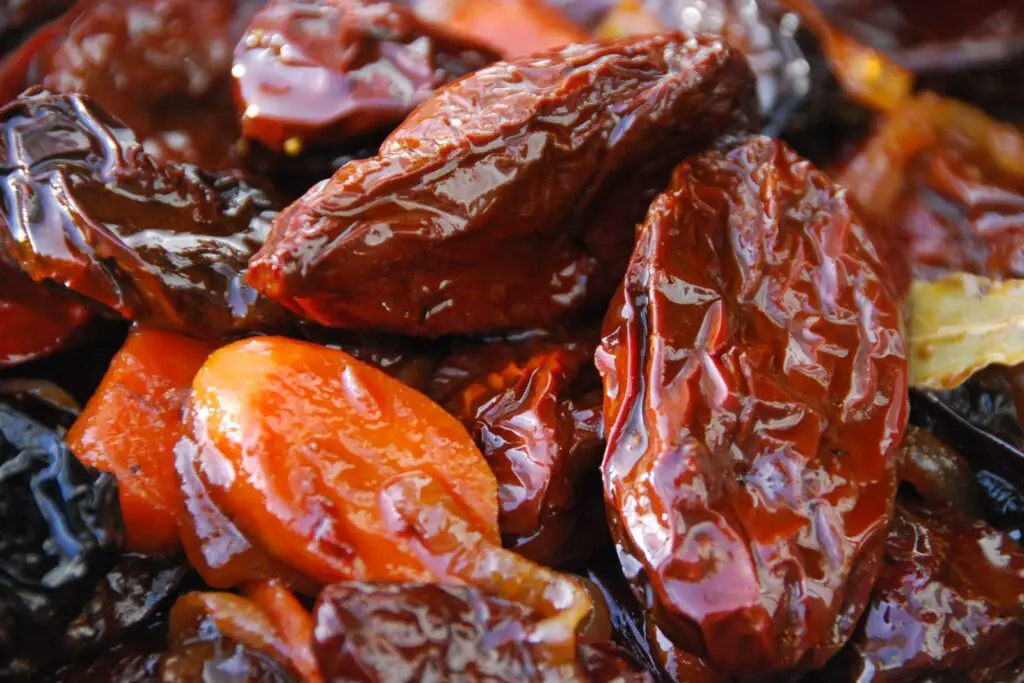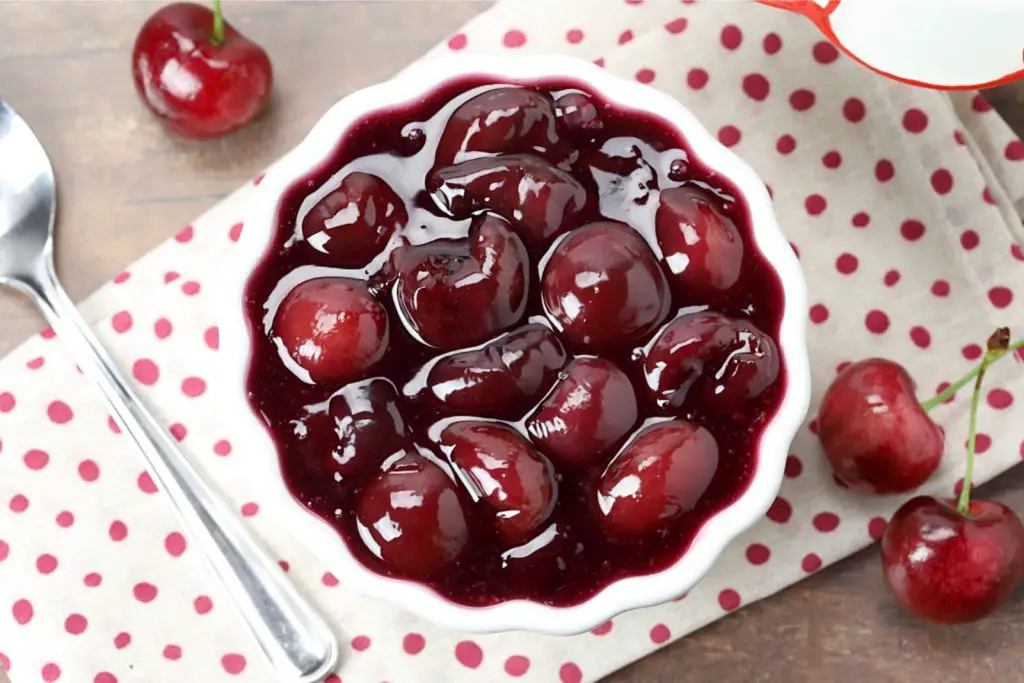
Meringues are delicate and airy confections made from egg whites and sugar. They are beloved for their crisp exterior and soft, chewy center. Whether you’ve made a large batch of meringues or simply want to save some for later, freezing is an excellent option to extend their shelf life. Freezing meringues properly will help maintain their texture and flavor, allowing you to enjoy these delightful treats at any time. This article provides a step-by-step guide on how to freeze meringues effectively, ensuring that they remain delicious and ready to be savored.
Here’s a guide on how to freeze meringues:
Step 1: Choose fresh meringues
When it comes to freezing meringues, selecting fresh ones is crucial for preserving their quality and ensuring a successful freezing process. Freshly made meringues that have been stored properly are the ideal candidates for freezing. Here’s why:
- Freshly made meringues have the best texture: Meringues are known for their delicate and airy texture, with a crisp exterior and a soft, chewy center. When meringues are freshly made, they have the perfect balance of these textures. Freezing them while they are at their best will help maintain their unique texture once they are thawed.
- Retaining flavor: Meringues derive their flavor primarily from the combination of egg whites and sugar. Freshly made meringues have a distinct flavor profile that can be compromised if they are frozen past their prime. By choosing fresh meringues, you ensure that their flavor remains intact even after freezing.
- Avoiding texture loss: Meringues that have been sitting out for too long or have been improperly stored can start to lose their texture. They may become stale, chewy, or overly dry. Freezing meringues in this state will only amplify these negative changes, resulting in a disappointing texture upon thawing.
- Enhanced freezing process: Fresh meringues freeze better due to their optimal moisture content. Moisture is crucial for meringues to maintain their delicate structure. When meringues are frozen while still fresh, the moisture is effectively preserved, allowing for better texture retention during freezing and subsequent thawing.
Can I freeze meringues that are already decorated with whipped cream or fruit?
It is not recommended to freeze meringues that are already decorated with whipped cream or fruit. Freezing whipped cream can cause it to separate and become watery upon thawing. Similarly, fruits may release moisture when frozen, which can lead to a loss of texture and flavor. It is best to freeze meringues separately and add the whipped cream or fruit toppings after thawing for the best results.
Step 2: Prepare for freezing
Properly preparing meringues before freezing is essential to maintain their delicate structure and prevent breakage. Cooling meringues before freezing is a crucial step in ensuring their integrity during the freezing process. Here’s why it’s important to allow meringues to cool completely before freezing:
- Firming up the texture: Meringues are made from whipped egg whites and sugar, and their structure heavily relies on the air trapped within during the whipping process. While baking, the meringues develop their crisp exterior and soft interior. Allowing the meringues to cool at room temperature for about an hour after baking gives them time to firm up and stabilize.
- Minimizing breakage: Meringues are delicate and fragile due to their airy composition. If you attempt to freeze meringues while they are still warm, they can be more susceptible to breakage or collapsing during the freezing process. Cooling them first ensures that they have set properly, reducing the risk of damage while being stored in the freezer.
- Even temperature distribution: Cooling meringues before freezing allows them to reach room temperature, ensuring that the heat from baking is evenly dispersed throughout the treat. This step prevents any residual warmth from creating condensation inside the storage container when the meringues are frozen, which could lead to freezer burn and negatively impact their texture and flavor.
- Maintaining crispness: Proper cooling ensures that excess moisture evaporates from the meringues, helping them maintain their desired crispness. If meringues are frozen while still warm or with excess moisture, they can become soft or sticky upon thawing, losing the pleasant contrast between their crunchy exterior and chewy interior.
Can I freeze meringue batter instead of fully baked meringues?
It is generally not recommended to freeze meringue batter before baking. The process of freezing and thawing can affect the structure and stability of the meringue, leading to potential issues with texture and volume when baked. It is best to bake the meringue batter first, then freeze any leftover fully baked meringues for storage, as they tend to hold up better in the freezer.
Step 3: Arrange the meringues
Arranging the meringues properly on a baking sheet or tray before freezing is essential to ensure they freeze individually and don’t stick together. By following this step, you can maintain the integrity and appearance of each meringue. Here’s why it’s important to arrange meringues carefully when preparing them for freezing:
- Individual freezing: Meringues are delicate and can easily stick to each other if they come into contact while freezing. Placing them on a lined baking sheet or tray ensures that they have enough space to freeze individually. This prevents them from merging into a single mass and makes it easier to retrieve individual meringues when needed.
- Avoiding deformation: Meringues are prone to deformation when handled roughly or placed too close together. By arranging them with enough space between each meringue, you minimize the risk of their delicate shapes getting distorted. This step helps maintain the beautiful appearance of each meringue, preserving their visual appeal even after freezing.
- Facilitating even freezing: Proper spacing allows for better airflow around the meringues during freezing. Adequate air circulation promotes even freezing, ensuring that the meringues freeze uniformly and maintain their desired texture throughout. This helps prevent any inconsistencies in texture or moisture levels that can arise from uneven freezing.
- Easy storage and portioning: Placing the meringues on a baking sheet or tray makes it convenient to transfer them to storage containers or freezer bags once they are fully frozen. By arranging them in a single layer, you can stack or store the frozen meringues more efficiently in the freezer, maximizing space. It also makes it easier to remove individual meringues without having to defrost the entire batch if you only need a few at a time.
Step 4: Freeze the meringues
Freezing the meringues individually is a crucial step to prevent them from clumping together and ensure that each meringue maintains its shape and texture. By following this step, you can easily retrieve individual portions without having to defrost the entire batch. Here’s why it’s important to freeze the meringues individually:
- Preventing clumping: Placing the baking sheet or tray with the meringues in the freezer allows each meringue to freeze separately. This prevents them from sticking to one another and forming clumps or conglomerates. Individual freezing ensures that each meringue maintains its distinct shape and appearance.
- Maintaining texture: Meringues have a delicate texture that can be compromised if they stick together during freezing. Freezing the meringues individually prevents them from fusing or absorbing excess moisture from neighboring meringues, which can lead to a loss of their desired texture and result in a less pleasant eating experience.
- Easy portioning: Freezing the meringues individually makes it convenient to retrieve and use only the desired amount when needed. Whether you want to enjoy a single meringue as a light snack or use a specific number for a recipe, freezing them individually allows for easy portioning without having to defrost the entire batch.
- Minimizing breakage: Individual freezing also reduces the risk of breakage or damage when handling the frozen meringues. Since they are frozen separately, there is no need to separate them while they are still delicate and prone to breakage. This helps preserve their delicate structure and appearance, ensuring that they remain visually appealing.
Step 5: Package the meringues
Proper packaging is crucial when freezing meringues to maintain their freshness, prevent freezer burn, and protect their delicate texture. By transferring the fully frozen meringues into airtight containers or freezer bags, you can ensure their quality during storage. Here’s why it’s important to package the meringues correctly:
- Protection from freezer burn: Freezer burn occurs when moisture evaporates from the surface of the food and leads to the formation of ice crystals. To prevent freezer burn, it’s important to store the meringues in airtight containers or freezer bags. These containers create a barrier that reduces exposure to air and moisture, minimizing the risk of freezer burn and maintaining the meringues’ flavor and texture.
- Maintaining freshness: By removing as much air as possible from the packaging, you create a more optimal environment for preserving the meringues. Oxygen exposure can lead to the deterioration of flavor and texture over time. Airtight packaging helps retain the meringues’ freshness and prevents them from absorbing any unwanted odors from the freezer.
- Preventing sticking: Meringues can be prone to sticking together, especially in humid environments. If you choose to use freezer bags, placing a layer of parchment paper between each meringue creates a barrier that helps prevent them from sticking together. This extra precaution ensures that you can easily retrieve individual meringues without any damage or deformation.
- Convenient storage and organization: Packaging the meringues in containers or freezer bags allows for efficient storage and organization in the freezer. It enables you to stack or store the meringues neatly without taking up excessive space. Additionally, proper labeling with the freezing date ensures that you can keep track of their storage time and consume them within the recommended period.
Step 6: Label and date the packages
Labeling and dating the packages is an important step when freezing meringues as it allows you to keep track of their freezing time and ensures that you consume them within their recommended storage period. By clearly indicating the date of freezing on each package, you can avoid consuming meringues past their prime and maintain their optimal quality. Here’s why labeling and dating are essential:
- Tracking storage time: Meringues, like any other food item, have a limited storage life in the freezer. Over time, even when properly frozen, meringues can experience changes in texture, flavor, and overall quality. By labeling the packages with the date of freezing, you can keep track of how long the meringues have been in the freezer. This information helps you use them within the recommended storage period, ensuring that you enjoy them at their best.
- Preventing food waste: Meringues that are stored beyond their recommended storage period may not taste as good or have the same texture as when they were freshly frozen. Labeling the packages allows you to easily identify the oldest meringues and prioritize their consumption. This practice helps minimize food waste by ensuring that you consume the meringues before their quality begins to deteriorate significantly.
- Maintaining optimal quality: While frozen meringues can generally be safe to consume for a longer period, their quality may start to decline over time. By knowing the freezing date, you can plan accordingly to enjoy the meringues when they are still at their best. This step allows you to savor the delightful texture, flavor, and overall experience of the meringues before any noticeable changes occur due to extended storage.
- Easy inventory management: Labeling and dating the packages make it easier to manage your freezer inventory. You can quickly identify the meringues and keep track of their freezing time without having to open every container or bag. This organization simplifies meal planning and ensures that you have a clear overview of the available frozen treats in your freezer.
Step 7: Return to the freezer
After properly packaging the meringues, it’s essential to place them back in the freezer with care to prevent crushing or damage. Positioning them correctly and storing them in an undisturbed section of the freezer helps maintain their delicate shape, texture, and overall quality. Here’s why it’s important to handle the packaged meringues carefully when returning them to the freezer:
- Preventing crushing or damage: Meringues are delicate and can easily break or get crushed if handled roughly. When returning the packaged meringues to the freezer, ensure they are positioned in a way that minimizes any pressure or weight on them. Avoid stacking heavy items on top of the meringues or placing them in a location where they can be easily crushed or jostled. This step helps preserve their delicate structure and prevents any physical damage during freezing.
- Maintaining shape and texture: Proper positioning in the freezer is crucial for maintaining the shape and texture of the meringues. If they are stored in a section where they are likely to be disturbed or come into contact with other items, there is a higher risk of them getting misshapen or crushed. By placing them in an undisturbed area, you ensure that they maintain their delicate structure and retain their desired texture, resulting in a better eating experience when they are eventually thawed and consumed.
- Preserving quality and flavor: Freezers can be prone to temperature fluctuations, which can affect the quality and flavor of frozen items. Placing the packaged meringues in a section of the freezer where they are less likely to be disturbed helps maintain a consistent and stable freezing environment. This minimizes the risk of temperature fluctuations that could compromise the meringues’ overall quality, taste, and texture.
- Easy retrieval and organization: Thoughtful placement of the packaged meringues in the freezer makes it easier to locate and retrieve them when desired. By keeping them separate from other frozen items and storing them in an organized manner, you can easily access the meringues without having to search or disturb other items in the freezer.
How long can I store frozen meringues?
You can store frozen meringues for up to 2-3 months without a significant decline in quality. Properly sealed and stored in an airtight container or freezer bag, meringues are less prone to freezer burn and maintain their texture and flavor. It’s important to label the container with the date of freezing to keep track of their storage time. After the recommended storage period, the meringues may start to lose their crispness and become less enjoyable to eat.
Other related questions
How do I properly defrost meringues?
To properly defrost meringues, follow these steps. First, transfer the frozen meringues from the freezer to the refrigerator and let them thaw overnight. Avoid defrosting them at room temperature, as it can cause condensation and make the meringues lose their texture. Once thawed, keep the meringues in a sealed container until you’re ready to serve them to maintain their freshness.
Can I refreeze previously thawed meringues?
It is generally not recommended to refreeze previously thawed meringues. The process of freezing and thawing can cause moisture to be released, which can negatively affect the texture and quality of the meringues. Additionally, refreezing can increase the risk of bacterial growth and compromise food safety. To ensure the best quality, it is advisable to only thaw the amount of meringues needed for immediate consumption and avoid refreezing any leftovers.
How do I know if my frozen meringues have gone bad?
To determine if frozen meringues have gone bad, you can look for certain signs. Firstly, visually inspect the meringues for any signs of discoloration, mold, or an off-putting odor. If the meringues appear discolored or have a strange smell, it is best to discard them. Secondly, if the meringues have become excessively soft or sticky after thawing, it may indicate that their texture has deteriorated, and they are no longer suitable for consumption. Trust your senses and use your judgment when assessing the quality of frozen meringues.
Can I use frozen meringues with the fresh ones?
It is generally not recommended to mix frozen meringues with fresh ones, as the textures and consistencies may differ. Frozen meringues tend to have a different texture compared to freshly made ones, and their crispness might be compromised after thawing. Additionally, the moisture content of frozen meringues can vary, potentially affecting the stability of desserts or recipes that require meringues. To ensure consistency in your recipes, it’s best to use either all frozen or all fresh meringues, depending on your preference and the desired outcome.
How do I ensure the texture of frozen meringues remains crisp and airy?
To ensure the texture of frozen meringues remains crisp and airy, proper storage is key. Package the meringues in an airtight container or freezer bag to prevent moisture from affecting their texture. Avoid exposing them to temperature fluctuations by keeping them in the coldest part of the freezer. Thaw them in the refrigerator to minimize condensation. Following these steps will help maintain the desired crispness and airy texture of the meringues.








